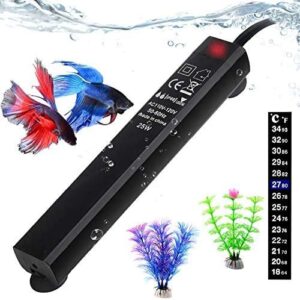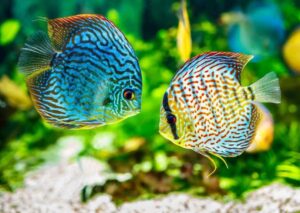The next stage is to actually set up your air-supplying you have chosen the species of fish and plants you want to keep, located a suitable tank, and bought all the required supplies. Many people quite randomly add stuff to their aquarium without much consideration, which usually means that they will encounter a lot more problems than the prepared aquarists. By sticking to a plan when you arrange your first aquarium you can save yourself a lot of time and trouble.
The first thing you should do is to thoroughly clean your tank. If you skip this stage simply because your new aquarium looks clean and shiny, your fish might die due to leftover contaminants that become dissolved in the water. A previously used aquarium also needs a good scrub to remove unwanted parasites and diseases. Many microorganisms are remarkably resilient and can stay dormant even in an empty aquarium.
Normally, it is inadvisable to use detergents when cleaning aquarium equipment, but during this first wash, you can use a small amount of dishwashing liquid in warm water. It is of imperative importance that you rinse away all traces of washing liquid as soon as possible. Use warm water to thoroughly rinse the aquarium several times. Fish can die from even tiny amounts of dishwashing liquid.
When you have cleaned your tank, you should clean all the items that will go into the aquarium, such as equipment and aquarium décor. If you use a bucket when cleaning your equipment, you should use a bucket that has not previously been contaminated with any form of detergent. Fish tank Gravel should be washed under warm running water while being stirred. Continue to stir until the water is clear.
If you plan to include bogwood in your setup, you might have to keep it in a bucket for a few weeks before you can place it in the aquarium. Bogwood cannot sink until it has been water-drenched. If you are lucky, your bogwood has been properly drenched before entering the store shelves.
You should be very careful with items from the wild since they might affect the water chemistry in the aquarium. If you still want to use aquarium decoration from the wild, you must make sure that the items free from undesired microorganisms. Place them in a bucket filled with water and chlorine bleach. All traces of chlorine bleach must naturally be removed afterward by repeated rinsing and soaking in fresh water.
Before you begin to fill your aquarium with water you should check that the spot that you have chosen is suitable. The floor must be flat and the room should ideally not be subjected to shakings. A special type of aquarium matting can be used to decrease unevenness between the aquarium and the thing that stands on top of it. A special aquarium stand is recommended, especially for larger aquariums since they can become too heavy for ordinary furniture.
If your tap water contains chlorine, you need a purchase a water conditioner from the fish store to remove the chlorine. In many countries, chlorine is added to tap water to reduce the growth of bacteria and other microorganisms. In an aquarium, chlorine is naturally unwanted.
Now it is time to test your aquarium for leaks. Mending leaks is much easier now than when you have filled your aquarium with gravel, equipment, fish etcetera. Fill your aquarium with water and let it stay like that for at least half a day. If there are no signs of leaks, you can remove the water and begin to decorate your aquarium.
The first thing that you should add to your aquarium is the fish tank gravel. If you want to use an under-gravel filter, the necessary plates must be inserted before the gravel. It is popular among aquarists to add more gravel to the back of the aquarium than to the front, to create a sloping bottom that gives you a better view of the aquarium. Adding 1-3 inches of substrate is common, but some aquarists prefer a deep sand bed while others go for much less gravel. If you are going to use under gravel filtration, you should follow the instructions for the filter system.
The next step involves filling the aquarium halfway up with water. If you fill the aquarium up, it will be more difficult to add equipment and decorations. One of the most convenient ways of filling your aquarium with water is to place a place on top of the gravel and pour dechlorinated water onto that plate. With this method, you will disturb the gravel as little as possible. Try to direct the flow to the sides of the tank. By using a plate and adding water at a slow pace, you can have your water pretty clear from the start. It is normal for the water to look a little cloudy after being poured into the aquarium; it will settle after a day or two.
Attach the equipment to their proper places in the aquarium. For most beginner aquarists, this means the heater, the thermometer, and the filter. A fish tank heater should be placed somewhere in the aquarium where the circulation will be potent since this will spread the heat evenly in the tank. The thermometer should be placed where it is easy to read. Do not connect the equipment to the electrical outlet yet.
Place aquarium decorations at their desired places. Try to create plenty of good hiding spots for your fish, since this will make them feel more at home in the aquarium. A relaxed fish is less prone to diseases. Aquarium decoration is also a good way of hiding ugly cable cords, tubes etcetera. Make sure that the decorations are safely secured. Caves should not be able to collapse, stones should not topple, and artificial plants should be anchored in the substrate or attached to aquarium decoration.




